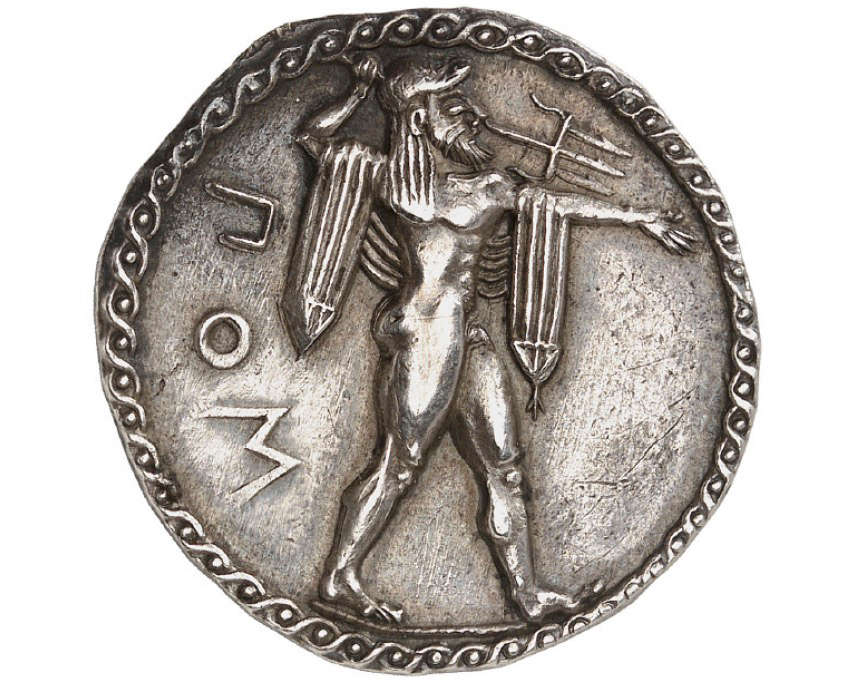High Quality Greek Coins from a “Late Collector” at Nomos
Nomos AG
Nomos 34
Coins
13 October 2024
CH-Zurich
By Alan Walker
Yes, indeed, the latest Nomos Auction, the thirty-fourth, taking place on October 13th, 2024, (luckily, a Sunday and NOT a Friday!), is now online – the printed catalogues will be arriving fairly soon. This is, in fact, a very special sale: the coins within it were the property of a retiring collector who never sought publicity or renown, but had a fine sense of style and a great love for Greek antiquity. Our “Late Collector”, who passed away nearly a generation ago, carefully selected his coins based on his own highly eclectic taste, rather than accepting the advice of experts or the suggestions of scholars; thus, while many of the coins within this collection are as perfect as they could be, others have a lack in condition made up by beauty and elegance. He very much knew his own mind, if he liked a coin, he bought it, but if he really liked a coin, he bought two; and if he adored one side of a coin, he didn’t really worry too much about the other! The collection he put together is a small one – there are only 131 single lots in this sale – it ranges from gems of the Archaic period, to those of the Classical and the Hellenistic, and in price from the curiously inexpensive to the truly stratospheric: he bought what he liked. As a result, there are coins in this collection of the type that are only found in the greatest, most advanced and valuable of collections, while there are others that are within the reach true connoisseurs of every level. Now, let’s look at a few of them…
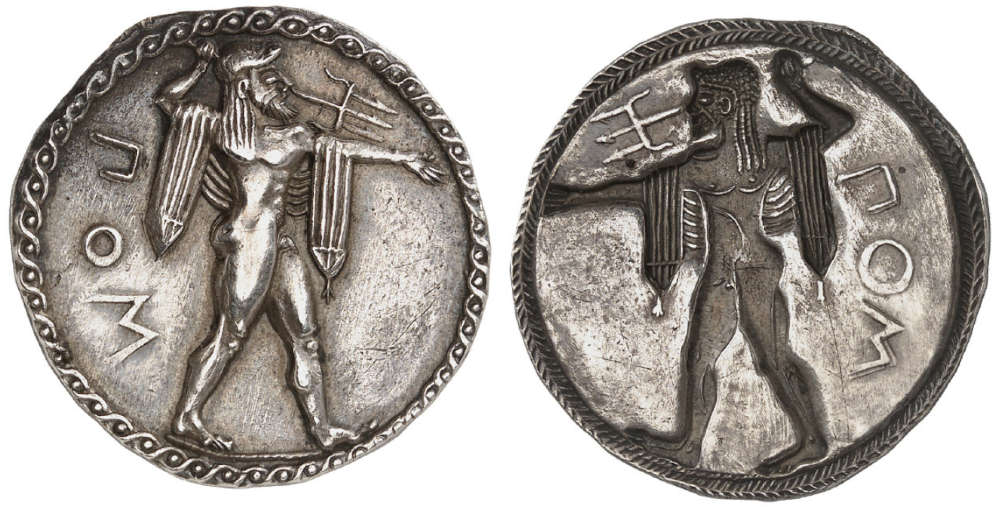
Lot 11: Lucania. Poseidonia. Circa 530-500 BC. Stater. A remarkably attractive piece, of the finest Archaic style, struck in high relief, and beautifully toned. Extremely fine. Property of a Late Collector, ex Bank Leu 42 (1987) and from the collection of C. Gillet, Kunstfreund, Bank Leu & Münzen und Medaillen (1974). Estimate: 275,000 CHF.
Lot 11
What we have here is the obverse of the famous “Kunstfreund” Poseidonia, one of the most impressive of all the Archaic Greek coins that have come down to us. It shows us a powerfully muscled figure of Poseidon striding to right and thrusting his trident at his foe. His head, arms and body, from his abdomen down to his feet, are shown in profile, while his chest appears to be facing (with the right breast bare and with the left covered by his long hair). This may, in fact, be an illusion caused by the difficulty the engraver faced in displaying the god’s shoulder and chest in profile. In any case, this is one of the surviving masterpieces of Ancient Greek Coinage – one we are most proud to present. This is one of those rare coins that turns whatever collection it’s in, whether of 12 coins or 500, into a great one! It was certainly one of Gillet’s greatest coins, it is one of our Late Collector’s greatest coins, and it is soon to become one of our New Owner’s.
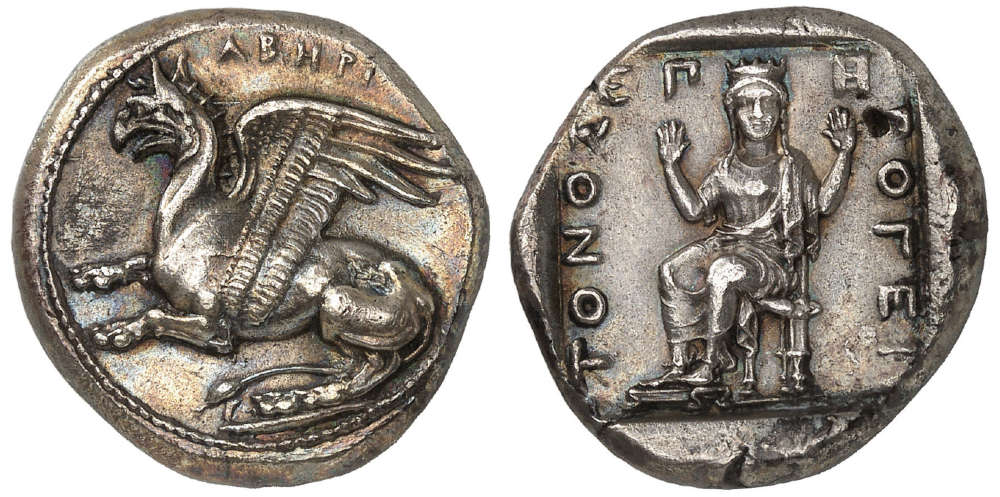
Lot 48: Thrace. Abdera. Circa 411/0-386/5 BC. Tetradrachm, Herogeiton magistrate, ca. 390 BC. Very rare. With a splendid griffin in high relief, and a remarkable representation of Hera. Sharply struck and attractively toned. Minor marks, otherwise, extremely fine. Property of a Late Collector, ex Giessener Münzhandlung 44 (1989). Estimate: 15,000 CHF.
Lot 48
This coin is a silver tetradrachm minted by the city of Abdera in Thrace at some point during the period between 411/0 and 386/5 BC. From the 3rd quarter of the fifth century BC down through 1st quarter of the fourth Abdera struck coins, which bore, on their reverses, the presiding magistrate’s name accompanied by a symbol of his choice. In the beginning, these “symbols” were contained within a small linear square, later they outgrew the square and took over the entire field (as here). These “symbols” included animals, objects of daily life (vases, musical instruments), “portraits”, or copies of statues or paintings; what we have is clearly the copy of statue. This seems to be a statue of Hera, but it is not just any statue, it shows here in a particularly unusual pose. She raises her hands, palms outwards, in what must be an apotropaic gesture (she can’t just be surprised), to ward off some evil. Of great interest is the rather artistically complicated way the die engraver presented her: at first she looks as if she is seated to left, but turning herself to face the viewer. After a second look it is clear that her throne is, itself turned half-left, partially towards the viewer (compare it to the seated Zeus on tetradrachms of Alexander). This is quite an achievement! Thus, not only is this a very rare and important coin, and a coin of iconographic interest, it is also a coin that illustrates an artistic advance: the attempt at showing a pose intermediate between a profile and a facing view.
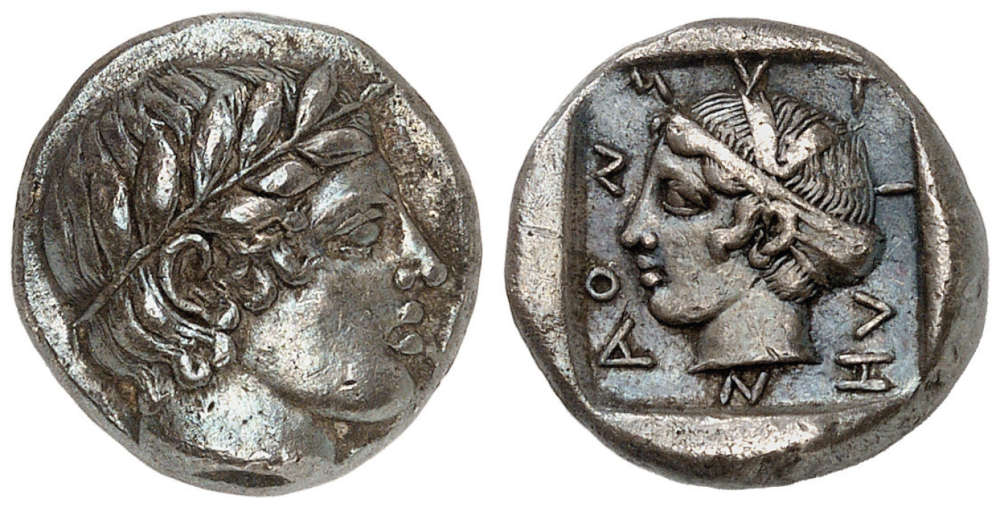
Lot 101: Lesbos. Mytilene. Circa 430-400 BC. Drachm. Of great rarity, the third known example. A coin of fine Classical style, nicely centered and toned. Minor marks, otherwise, about extremely fine. Property of a Late Collector, ex Bank Leu 45 (1988). Estimate: 7,500 CHF.
Lot 101
This is a very, very rare drachm from Mytilene – the third example known, struck at some point during the last quarter of the 5th century BC. On the obverse we see a fine and noble head of Apollo, but the head on the reverse is even more interesting. It is a “portrait” of the famous poetess Sappho. She is shown here as a young woman, probably not out of her teens, and we can easily recognize here from the characteristic curls over her forehead. While she does look a little androgynous here, that is probably from the engraver’s desire to show her intellectually poetical youthfulness. The celebrated lyricist wall painting from Pompeii shows her at roughly the same age, but in a more feminine way; for a rather unattractive version, do see her “portrait” painted in 1862 by Arnold Böcklin (now in Basel): she has a somewhat petulant expression, thick hair, very heavy eyebrows and – oh my! – an incipient mustache!! What was Böcklin thinking? If any of the ancient artists who portrayed Sappho could have met Böcklin they would have had a thing or two to say to him!
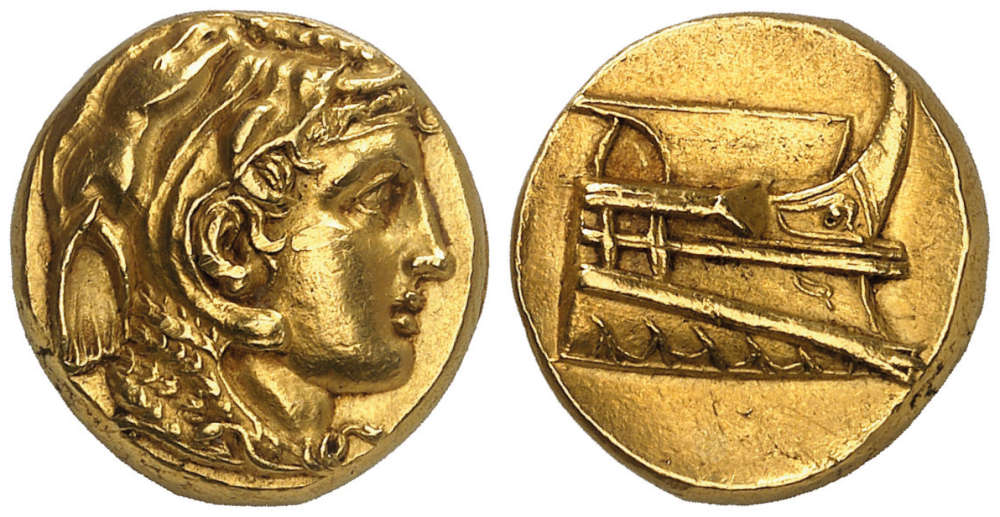
Lot 126: Ptolemaic Kings of Egypt. Ptolemy I Soter, as satrap (323-305 BC). Stater, Alexandria, c. 312. Of great rarity, one of only two examples in private hands out of the fewer than half a dozen examples known. A coin of great interest, historic importance and fine style. Minor marks, otherwise, extremely fine. Property of a Late Collector, ex Bank Leu 33 (1983). Estimate: 100,000 CHF.
Lot 126
The final coin is an extremely rare gold stater issued by Ptolemy I, satrap of Egypt, in 312 BC and struck in Alexandria. It was almost certainly minted to mark the transfer of Egypt’s capital from Memphis to Alexandria. Alexander’s body had already been placed in a great tomb in the Delta city, soon after its “capture” by Ptolemy in 322; thus, his portrait refers to the great honor his body conferred on his eponymous city. As for the galley prow on the reverse, that would remind the viewer that Alexandria was the main base for the Egyptian fleet. This historically evocative coin is one of only two in private hands, and is of the greatest importance.




